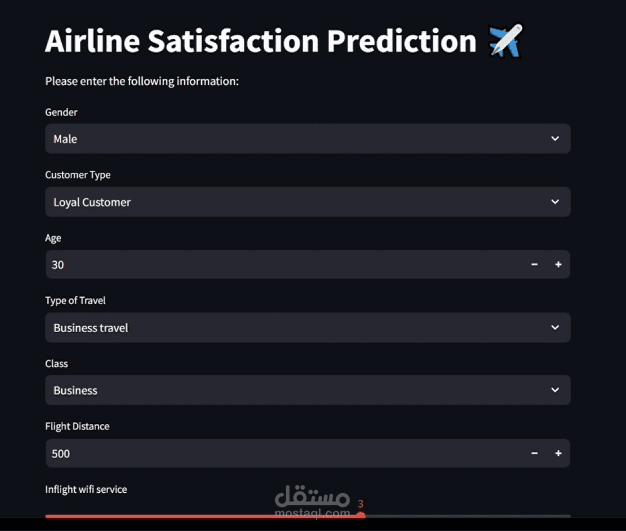Airline Satisfaction Prediction
تفاصيل العمل
EDA & Data Preprocessing: We started by performing Exploratory Data Analysis (EDA)
to understand the dataset's characteristics, identify patterns, and detect any anomalies.
This critical step involved handling missing values and inconsistencies, and transforming categorical features into a format suitable for the models.
Objective: To predict whether an airline passenger would be satisfied or dissatisfied based
on 24 different features from the survey data.
Results: We conducted a thorough evaluation of each model, measuring key metrics such as Accuracy, Precision, Recall, and F1-Score. Our final analysis showed that the Random Forest algorithm performed best, achieving an accuracy of 96%.
